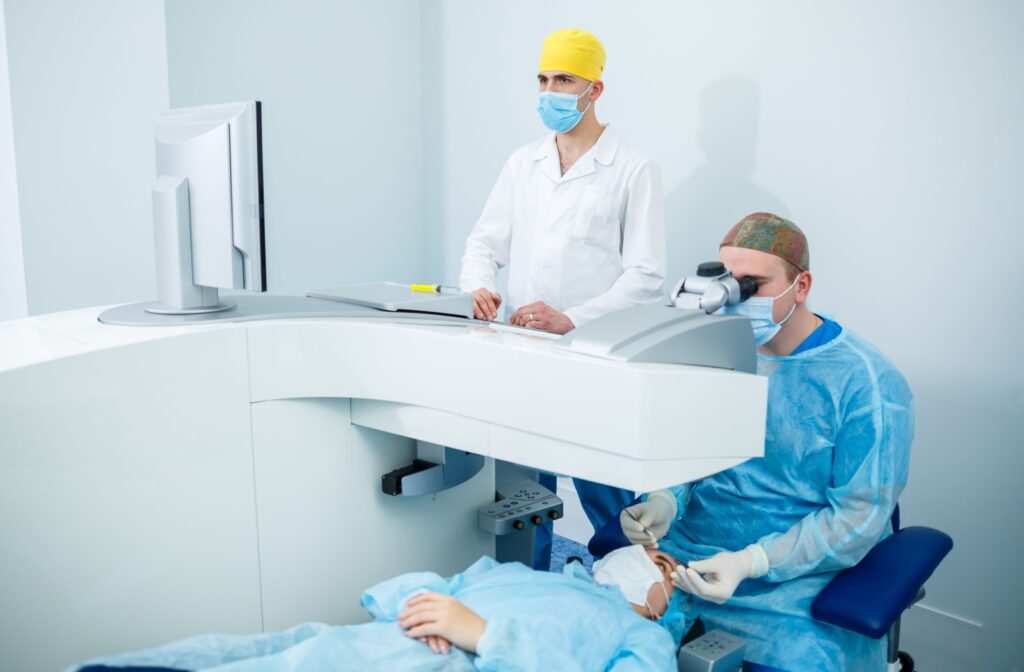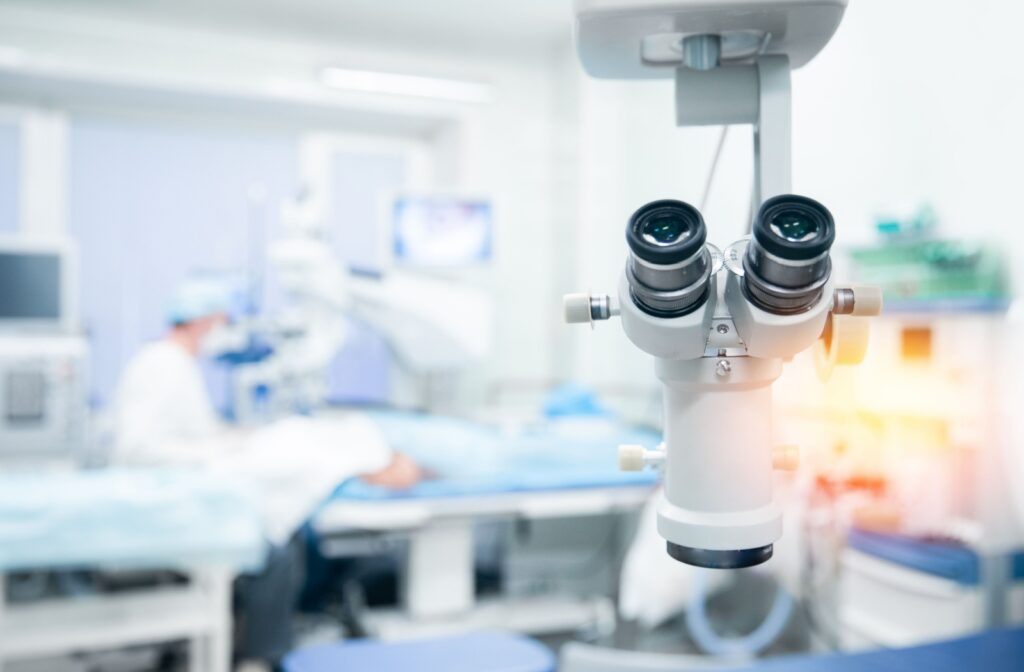If you have nearsightedness, you know the challenge of seeing distant objects clearly. You might wear glasses or contact lenses to help, but perhaps you’ve considered other options. One common procedure is LASIK, a type of laser vision correction that reshapes the eye’s surface to improve vision.
LASIK is designed to correct nearsighted vision for many people. By carefully reshaping your cornea, it helps your eye focus light properly, often giving you clearer, sharper vision.
What Is Nearsightedness & How Can LASIK Help?
Nearsightedness, also called myopia, happens when your eye focuses images in front of the retina instead of directly on it. This optical mismatch makes distant objects look blurry while close-up objects typically remain clear. It’s a common refractive error that affects people of all ages.
LASIK addresses this by using a cool laser to gently reshape your cornea, the clear front part of your eye. This change adjusts how light enters your eye and helps it focus correctly on the retina. The goal is to produce clearer distance vision without the need for corrective lenses.
A Look at the LASIK Procedure
The thought of eye surgery can seem complex, but the LASIK procedure itself is a well-defined process. From your first consultation with an eye doctor in San Clemente to the recovery, you’ll know what to expect. Each step is carefully planned to support a smooth experience.
Before the Procedure
Your journey begins with a thorough eye examination to assess your vision and eye health. We’ll take detailed measurements of your cornea to map out the exact changes needed. This initial step is important for planning your procedure.
If you wear contact lenses, you’ll need to stop wearing them and switch to glasses for a few weeks beforehand. This allows your cornea to return to its natural shape. An unaltered corneal shape is necessary for accurate measurements and a successful outcome.
During the Procedure
First, your surgeon will numb your eyes with drops to keep you comfortable. Next, they create a thin flap on the surface of your cornea to access the underlying tissue. The flap creation is a quick and precise part of the process.
You’ll be asked to look at a light while a computer-guided laser reshapes the corneal tissue underneath the flap. The laser part of the procedure for each eye is quite quick. Finally, the surgeon repositions the flap, which begins to heal naturally without stitches.
After the Procedure
Recovery is typically fast for many people. You’ll receive medicated eye drops to use for a few days to support healing and prevent infection. Most people notice improved vision within 1–2 days.
Who Is a Good Candidate for LASIK?
LASIK is a popular choice for vision correction, but it isn’t suitable for everyone. Your unique eye health, prescription stability, and overall health are all important considerations. Several factors help determine if the procedure is a good fit for you.
Key Factors for Candidacy
An eye doctor will evaluate several key points to see if you are a candidate for LASIK. These generally include that:
- You are at least 18 years old.
- Your vision prescription has been stable for at least one year.
- You have good overall eye health, without conditions such as glaucoma or cataracts.
- Your corneas have enough thickness for the procedure.
What Can Disqualify a Person from LASIK?
An eye doctor will review your health history to see if any conditions might prevent a successful outcome. Some reasons you might not be a candidate include:
- A significantly changing vision prescription
- Severe dry eye syndrome
- Corneas that are too thin
- Certain autoimmune conditions

Possible Outcomes and Side Effects
It’s important to have realistic expectations about what LASIK can achieve. Many people achieve 20/40 vision or better and can perform most daily activities without glasses. However, you might still find glasses useful for specific tasks, like driving at night.
Common Side Effects
After the procedure, it’s common to experience temporary side effects. These usually resolve on their own within a few weeks or months as your eyes heal. These may include:
- Dry eyes
- Glare or halos around lights
- Increased sensitivity to light
Potential Risks
While serious complications are not common, some risks exist with any procedure. These can include undercorrection, where too little tissue is removed, or overcorrection, where too much is removed. In some cases, a follow-up procedure may be an option to refine your vision.
What About Farsightedness and Age?
As people get older, their vision needs can change. Many adults develop presbyopia, a condition that makes it harder to see things up close. This raises questions about how LASIK can help people who are both nearsighted and have trouble with reading vision.
LASIK for Nearsightedness and Presbyopia
One option for people over 40 is called monovision, or blended vision. With this approach, the surgeon fully corrects one eye for distance vision. The other eye is left slightly nearsighted for close-up tasks.
Over a short period, your brain learns to blend the 2 images. This can allow you to see clearly at most distances without a heavy reliance on reading glasses. Your eye doctor can simulate this effect to see if it’s a good choice for you.
Full Distance Correction
The other option is to correct both eyes for clear distance vision. This is a great choice for those who prioritize activities like sports or driving. With this correction, you will likely need reading glasses for close-up work as you age, just as you would without surgery.
The Cost of LASIK
The cost of LASIK can vary depending on the technology used and your specific vision needs. Because it’s often considered an elective procedure, most insurance plans don’t cover it. It’s a good idea to check with your vision plan to see what, if any, coverage you may have.
During your consultation, your eye doctor in San Clemente can provide detailed information about the costs involved. You can also discuss payment options that may be available. We believe in transparency when it comes to the financial aspects of your care.
See Clearly Without Glasses
If you’re tired of reaching for your glasses, LASIK may be an option worth exploring. Understanding the procedure, candidacy, and potential outcomes is the first step toward clearer vision. A comprehensive eye exam is one of the best ways to determine if it’s the right path for you.
Our Total Vision San Clemente team is here to answer your questions. We can help you understand all of your vision correction options. Schedule a consultation with us today to learn more.




